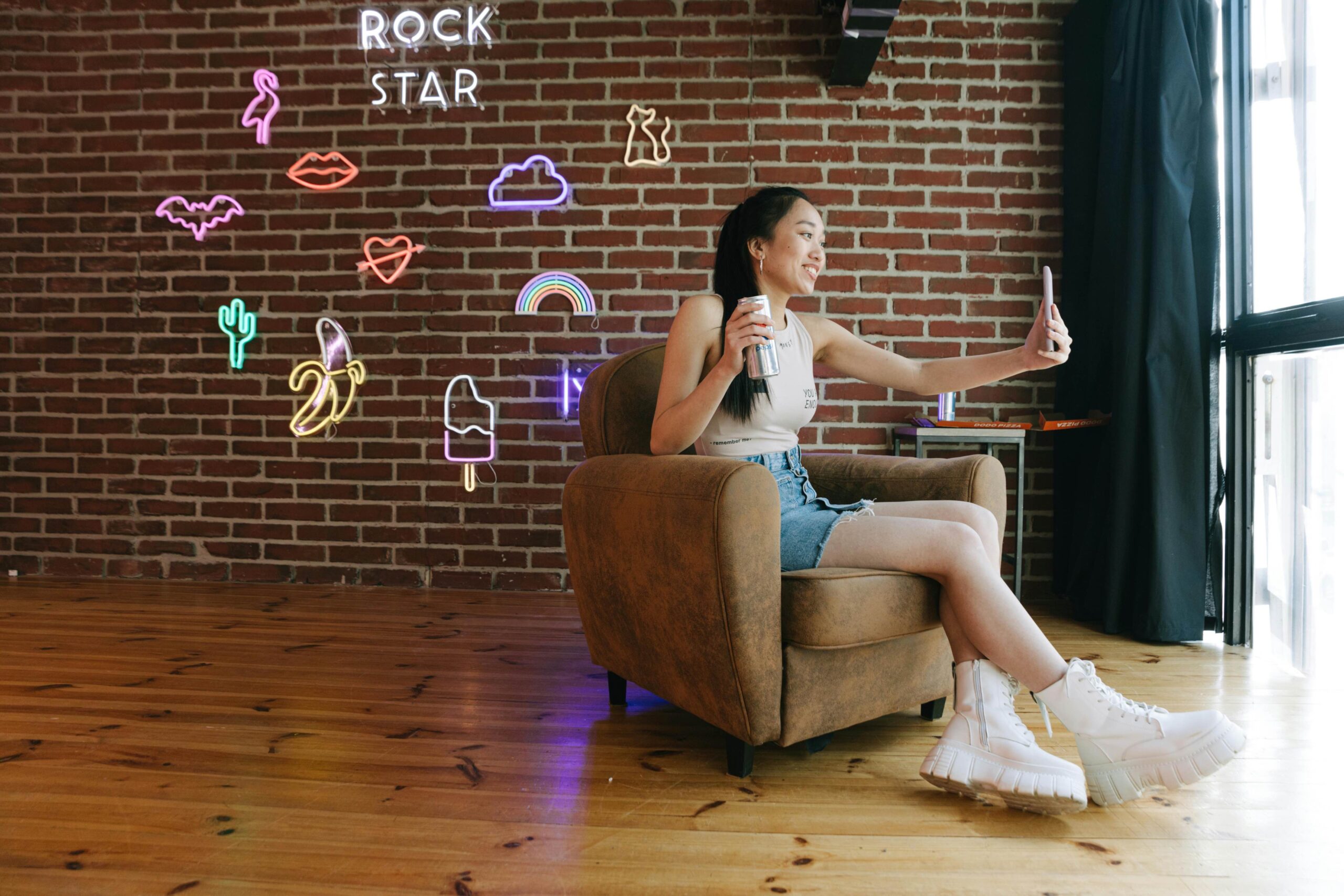In today’s creator economy, brands are partnering with people. Your identity, voice, and values shape how audiences connect with you and how brands choose to collaborate.
80% of companies now dedicate budget to influencer marketing, showing that creator collaborations are no longer experimental. They’re mainstream. With so many creators competing for the same opportunities, having a clear and consistent personal brand is what sets you apart and makes you the partner brands choose.
Don’t chase trends. Don’t chase followers. Don’t chase algorithms.
Be yourself. But build in a way that your voice can be heard, recognized, and valued. Right now and for the foreseeable future, that means showing up online.
Platforms are tools.
Content is a tool.
Your brand is the connection.
In this blog, we’ll explore the essentials of defining, refining, and amplifying your personal brand so you can grow your influence with confidence.
What Is Personal Branding and Why Does It Matter for Creators?

Personal branding goes beyond simply posting content. It’s the identity, values, and reputation that define how others see you. Branding is who you are; content is how you show it. Your brand is the story you tell, while your content is the medium that brings that story to life.
For creators, this distinction is crucial. A strong personal brand:
- Shapes audience perception → People know what to expect from you and why they should follow you.
- Strengthens trust → Authentic branding makes your audience feel connected and invested.
- Attracts long-term brand deals → Companies want partners who represent values and communities, not just quick impressions.
Take the example of Emma Chamberlain: she didn’t just post relatable YouTube videos, she built a brand around authenticity, humor, and individuality. That personal brand opened doors to fashion campaigns, a coffee company, and lasting influence beyond her original platform. Even at the micro-influencer level, creators who clearly define their brand identity are more likely to build engaged communities and attract brands seeking genuine alignment.
Content grabs attention, but your personal brand is what turns that attention into trust, influence, and long-term opportunity.
Finding Your Niche and Defining Your Brand Identity
Your niche is the foundation of your personal brand. Iit’s what makes you recognizable and memorable in a crowded creator space. Defining it helps you attract the right audience, stay consistent, and stand out to brands.
Start with your brand DNA:
- Core values → What do you stand for? (authenticity, creativity, education, lifestyle, sustainability)
- Voice → How do you speak to your audience? (humorous, aspirational, educational, relatable)
- Aesthetic → How does your content look and feel? (minimalist, colorful, raw/unedited, polished)
Try these quick exercises to sharpen your identity:
- “3 words” challenge: Pick three words that best describe your brand.
- One-sentence brand story: Sum up what you do and why in a single line.
- Perception test: Write how you think a follower vs. a brand partner would describe you, then compare.
The narrower and clearer your niche, the stronger your community becomes. A well-defined identity not only builds loyalty among followers but also makes you more attractive to brands seeking genuine alignment.
Visual Branding: Creating a Cohesive Look Across Platforms
First impressions matter, and in the creator world, your visuals are often the first thing people notice. A cohesive look across TikTok, Instagram, YouTube, and beyond helps your audience instantly recognize you, no matter where they find you.
Essentials to get right:
- Profile photos → Use the same or similar image across platforms for recognition.
- Bios → Keep them consistent in tone and keywords to reinforce your brand story.
- Color palette & typography → Choose 2–3 brand colors and fonts to use across graphics, captions, and thumbnails.
- Filters or editing style → Whether minimal, vibrant, or raw, stick to one style so your content feels unified.
Why it matters is consistency. It builds recognition. If someone sees your TikTok video and later stumbles on your Instagram post, they should instantly know it’s you. This recognition is what turns casual viewers into loyal followers.
Tools to help you stay consistent:
- Canva or Adobe Express → Create templates for stories, posts, and thumbnails.
- Notion or Pinterest → Build a mood board to guide your visual identity.
- Brand kits → Save your go-to colors, fonts, and logos for easy reuse.
Create your own brand kit, like a folder with your logo, fonts, colors, and templates. Reuse it across posts, reels, and YouTube thumbnails to save time while keeping your visuals aligned.
Building a Content Strategy That Reflects Your Brand
A strong personal brand is reflected in the type of content you consistently create. A clear strategy helps you stay organized, attract the right audience, and show brands how you can seamlessly integrate their products into your storytelling.
Start with content pillars
Choose 3–5 themes that embody your brand identity. These should reflect both your passions and what your audience expects from you.
Example: A lifestyle creator might focus on daily routines, travel diaries, wellness tips, and style inspiration.
These pillars keep your content balanced and prevent you from feeling “all over the place.”
Keep your brand voice consistent in collabs
Sponsored content should feel natural within your world, not forced. Always align brand partnerships with your values and pillars. Example: A fitness creator who shares workout tips and nutrition hacks features a protein bar collab—it fits seamlessly into their wellness narrative.
Plan your content mix
Use tools like Notion, Trello, or Later to map out posts across platforms. Alternate between educational, entertaining, and promotional content. Ensure each piece reinforces your brand identity, even when experimenting with trends.
When planning collabs, ask yourself: Would I post this even without the partnership? If the answer is yes, you’re on-brand.
Personal Branding Mistakes to Avoid
Even the strongest personal brands can lose impact if creators fall into common traps. Here are the mistakes to steer clear of:
- Being inconsistent across platforms
If your Instagram screams luxury minimalism but your TikTok is all over the place, audiences (and brands) will struggle to understand who you are. Consistency builds recognition and trust. - Imitating others too closely
Inspiration is good, copying is not. Audiences can spot inauthenticity quickly, and brands want unique voices, not duplicates of what already exists. - Accepting every sponsorship
Collaborating with brands that don’t align with your values dilutes your identity. Saying yes to everything may pay short-term, but it weakens your credibility long-term. - Neglecting audience interaction
Personal branding isn’t a one-way broadcast. Ignoring comments, DMs, or community conversations can make your brand feel distant instead of relatable. - Forgetting to evolve
Platforms change, audiences mature, and trends shift. If you stay rigid, your brand risks feeling outdated. Strong personal brands adapt while staying true to their core values.
Conclusion: Your Brand Is Your Superpower
Your personal brand is the story you tell and the trust you build with your audience. Take one small step today: refine your bio, create a brand kit, or define your three content pillars. Content may grab attention, but your personal brand is what builds lasting influence.











